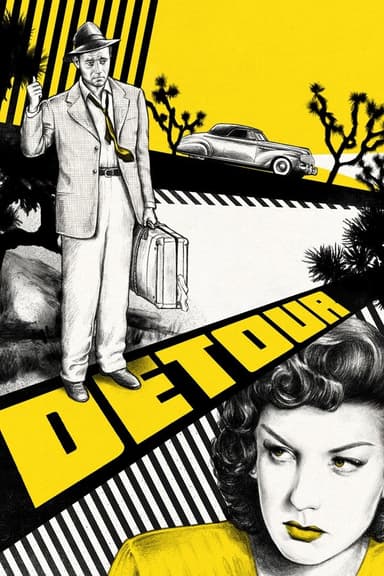
Strangers on a Train
1951 • Crime, Thriller • PG
A charming psychopath tries to coerce a tennis star into his theory that two strangers can commit the perfect crime by exchanging murders—each killing the other’s most-hated person.
Runtime: 1h 41m
Why you should read the novel
Reading Patricia Highsmith’s original novel 'Strangers on a Train' offers a more intimate exploration of the characters’ psyches and the disturbing logic that drives their actions. The book delves deeper into themes of guilt, duality, and morality, providing psychological nuances that can only be hinted at on screen. Highsmith’s writing richly sketches the inner struggles of both Guy and Bruno, inviting readers to question the boundaries of innocence and complicity in a way a film adaptation cannot fully achieve.
The novel allows for a slower buildup of tension, giving readers time to sink into the atmosphere and become genuinely unsettled by the evolving relationship between the protagonists. Highsmith’s prose invites readers to experience the escalating sense of paranoia, guilt, and obsession firsthand, creating an immersive psychological journey. This internal focus makes every decision and moral dilemma feel more urgent and personal.
While the movie offers iconic scenes and a visually gripping narrative, the book presents the full complexity of character motivations and consequences. For fans of thrillers, psychological suspense, or morally ambiguous tales, reading the source material provides a much richer, more resonant experience than the film adaptation alone.
Adaptation differences
One key difference between the book and Hitchcock's adaptation is the portrayal of the main characters, especially Guy Haines. In the novel, Guy’s psychological torment is foregrounded, and his involvement in Bruno’s plot becomes far more ambiguous. The book explores the gradual erosion of Guy’s morality and his increasing sense of connection to Bruno, presenting a complex portrait of complicity that the film only touches upon.
The movie, by contrast, streamlines and sanitizes Guy’s character, portraying him as far more straightforwardly innocent and morally upstanding. Hitchcock’s adaptation removes much of the moral gray area, making Guy’s predicament seem more like a classic case of being framed rather than an ethically fraught entanglement. This shifts the narrative focus away from mutual guilt and towards external suspense.
Another major change is the fate of Bruno Anthony. In the novel, Bruno is not just a straightforward villain. His complex psychological nature, alcoholism, and troubled family background are explored in detail, making him both more sympathetic and more disturbing. The film transforms Bruno into a more flamboyant and calculating antagonist, reducing much of the ambiguity and psychological subtlety that Highsmith carefully constructs.
Finally, the conclusion of the book and the film differ sharply. Highsmith’s ending is darker and more ambiguous, forcing Guy to confront the consequences of his actions in a psychologically devastating way. The film, however, opts for a more conventional wrap-up, with clearer lines between good and evil and a stronger sense of justice being restored. These differences make the book a more unsettling and provocative experience, while the film caters to mainstream expectations of resolution.
Strangers on a Train inspired from
Strangers on a Train
by Patricia Highsmith















